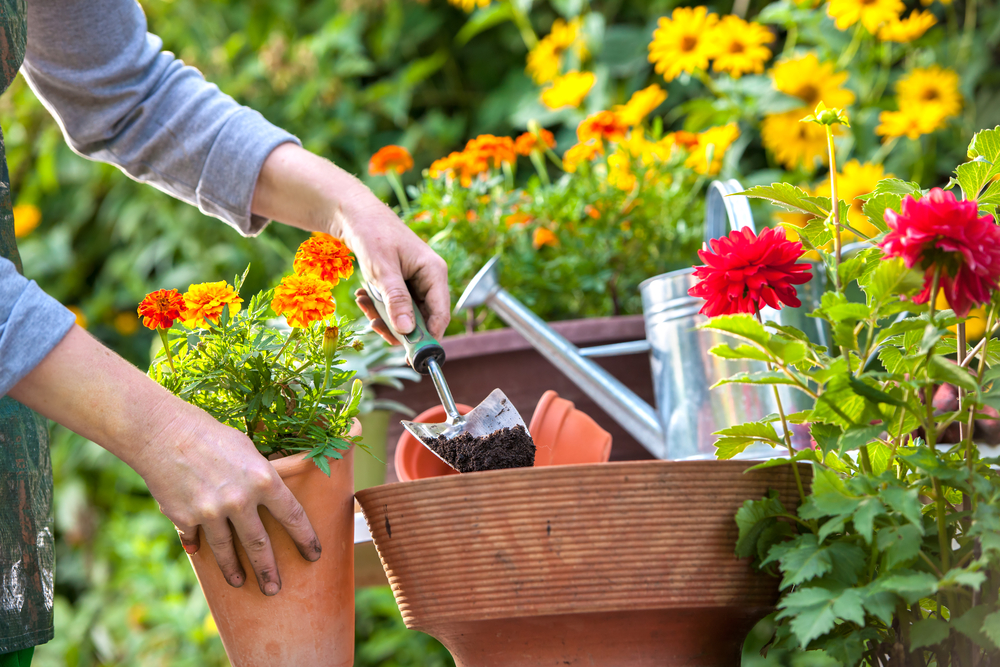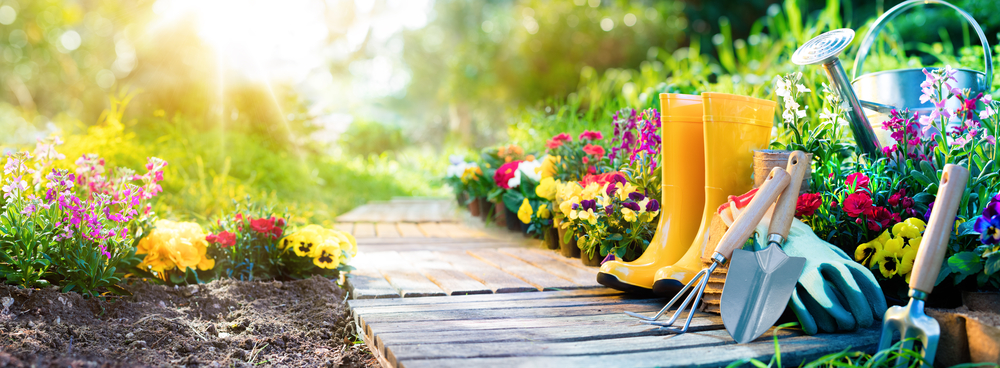Gardening is indeed one of the most fruitful home activities that you can enjoy while performing and will bear fruit (sometimes literally) in the future. You can divide your lawn into sections depending on the types of plants or their purpose (such as a herb patch). It is a great hobby – one that keeps your mind engaged while burning 300-400 calories every hour.

One common error among beginners is the wrong choice of plants. If you choose plants that are not suitable for the local weather or layout of your home, or if you do not fully understand the requirements of the plant, it will probably end up dying. If your garden does not turn out the way you imagined it to be, that can be disheartening, especially after putting in hours of manpower. Below is a small guide on the types of plants and their varying requirements to help you choose ones that perfectly suit your garden.
Types of Plants
Annuals
These plants have a lifespan of a year. They complete their entire lifecycle during the year and die at the end of it. This is a great choice if you want variation year after year. They bloom throughout the season so you can admire your beautiful blooming garden for several months. You should remember that some of them are self-proliferating as well, which means they release their seeds into the surrounding soil that will grow into plants as soon as the weather becomes suitable for budding. This detail is important if you want to get creative and change the plants next season. Some beautiful annual plants that are great for gardening are petunia, milkweed, begonia, sunflower, and geranium.
Biennials
Just as the name suggests, these plants live for two years. They grow and branch out in the first year; the second year is for the blooming to occur. Many biennials are self-proliferating, depending on their flowers and seeding. If you live in a place where the weather changes are extreme throughout the year, your biennials will behave as annuals as highly variating weather can shorten the life of the plant. Biennials that can be suited for easy gardening and maintenance are poppy, wallflower, stock, black-eyed Susan, and foxglove.
Perennials
Perennials have the longest lifespan, usually living for three or more years depending on the climatic conditions and care provided. Some of them can be green, floor-growing plants that can be planted between other types for a dash of greenery. They are more expensive than annuals and biennials and don’t stay in bloom for as long as the others do. However, one positive aspect of choosing them is that you don’t have to replant every year. Hibiscus, hydrangea, iris, tulips, and lavender are some eye-catching perennials that you can consider planting. The Strawberry Sundae hydrangea would be a beautiful addition to your shrub section with its bright pink and white flowers.
Important Gardening Criteria
Your primary focus, before even choosing plants, should be to understand the layout and properties of your garden and the needs of the plants. You must take note of the direction that your garden faces, the sunny and the shady areas, the moisture retention quality of the soil, and the weather of your region. Below are some requirements of plants that you should consider while choosing the ones that best suit your garden –
Sunlight
The amount of sunlight required by plants varies depending on the species and are very crucial to the health of the plant. If it is more or less than required, the plant will end up withering and dying much sooner than expected. When it comes to the sunlight quantity required, plants can be classified into four categories –
1. Full-shade – These plants should not be exposed to sunlight at all. It would be best to plant them near a wall on the north face of your garden.
2. Partial-shade – These are plants that require sunlight only for a few hours of the day, either during sunrise or sunset.
3. Light-shade – They require very less sunlight too, preferably placed beneath trees with good foliage for filtering the light.
4. Partial-sun – Such plants require limited sunlight but they can tolerate the full light of the sun.
5. Full-sun – These plants need a lot of sunlight and grow best if exposed to midday sunlight. They require a minimum of seven hours of direct sunlight for survival.
You can experiment and add a dash of novelty in the form of exotic plants such as the Ice cream tulip, which enjoys lush growth in tropical areas. Plant it in well-drained soil in a spot where it can get ample sunshine, and enjoy its cute pink and white blooms during late spring.
Planting Season
The flowering of plants depends heavily on the season in which they are planted. A plant needs enough time to grow and flourish before it starts blooming, and this depends on the local climate and the growth rate of the plant. Most flowers are defenseless against frost, so it is best to plan your planting much ahead. If your regional climate is warm, February would be the most ideal time to plant as it will give time for the plants to be ready to bloom by spring. In colder places, planting in mid to late April will give you a wonderful bloom during late summer. If you don’t want to wait for long or are doubtful about the health and adaptation of your plant, you can always plant the seeds in a smaller pot and transfer them to the soil when they grow a bit.
Plant Size
It is necessary to know the size of the plant and its flowers. Grouping your plants according to their size will add on to the aesthetics and will prevent your garden from appearing unplanned and disproportional. For example, sunflower plants grow quite tall and thin and have large flowers. They will look out of place if you plant them next to hydrangea. So, you have to read more about the height of the plant, size of the flowers, and foliage width and density before you sort your plants to make your efforts more rewarding.
Water Requirements
All plants are unique in their water requirements. Some require dry soil and minimal water retention, mostly those that are native to dry regions. Some might require really dense, water-retaining soil. Planting must be done at equal distances to allow rooting space. You should ideally water the plants once a day every day, preferably at dawn or dusk. Evenly distribute the water pouring and do not wet the leaves or stems as this might cause them to burn, especially if it’s a sunny day.

Gardening can be quite satisfying if done in a planned way. You can enjoy the blooms from spring through summer and maybe even have a grass patch to have picnics with your family. Understand the needs of your plants, give them a little TLC (tender loving care) and watch them flourish under your care.
What are your favorite flowers to plant each year, or watch grow? Personally, I favor unique varieties such as the ice cream tulip as a bright and very eye-catching highlight, especially in spring.
Share with us yours!







